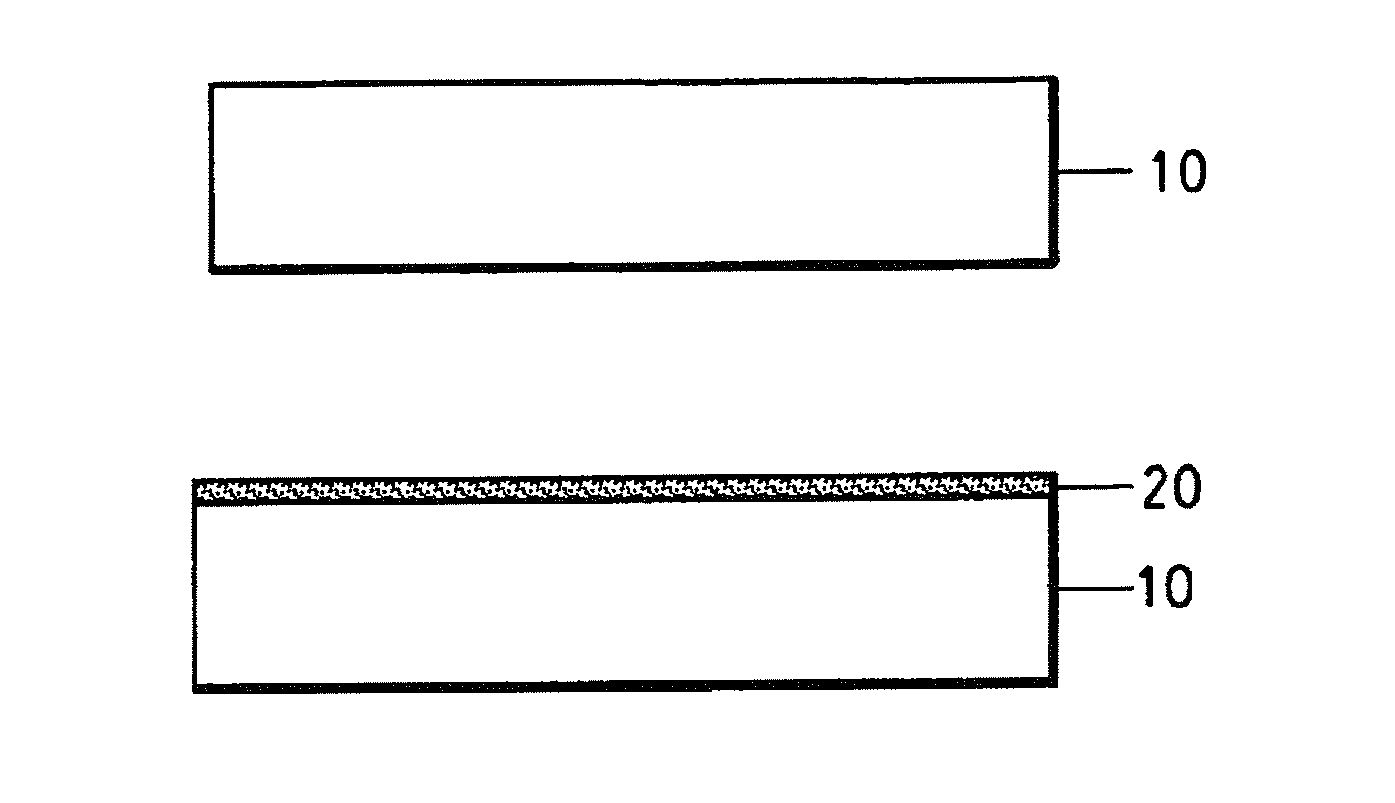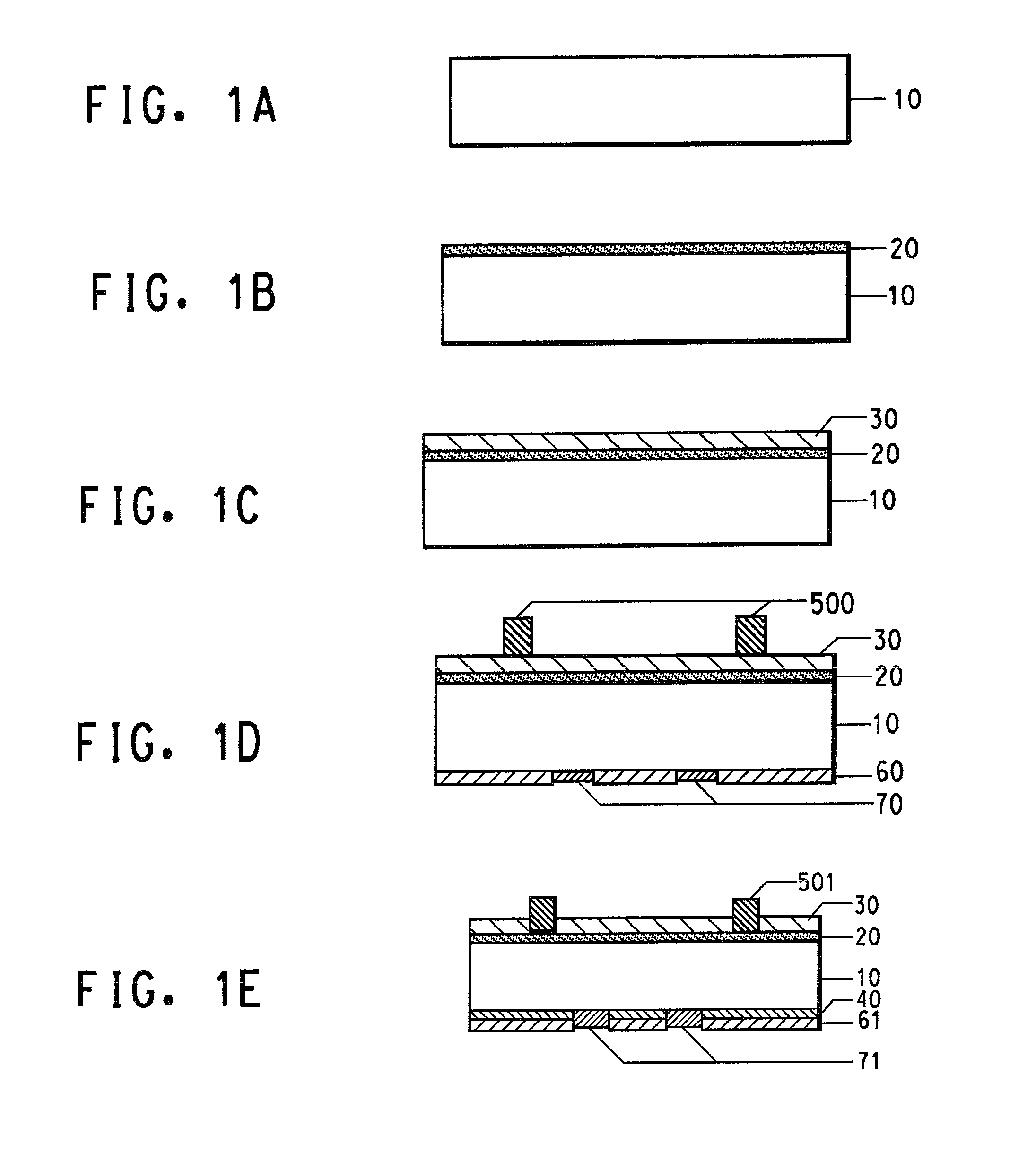Solar cell contacts containing aluminum and at least one of boron, titanium, nickel, tin, silver, gallium, zinc, indium and copper
a technology of solar cell contacts and aluminum, which is applied in the field of conductive formulations, can solve the problems of reducing increasing the cost of solar cell contact manufacturing, and reducing the quality of back surface passivation, so as to improve the reliability and electrical performance of solar cells, and reduce the cost. , the effect of reducing the bowing
- Summary
- Abstract
- Description
- Claims
- Application Information
AI Technical Summary
Benefits of technology
Problems solved by technology
Method used
Image
Examples
examples
[0075]Polycrystalline silicon wafers, used in the following examples were 243 cm2 in area and about 160 microns thick. These wafers were coated with a silicon nitride antireflective coating on the n-side of Si. The sheet resistivity of these wafers was about 1 Ω-cm.
[0076]Exemplary glasses of the invention are presented in Table 4.
[0077]
TABLE 4Exemplary Glass CompositionsGlassMole %ABCBi2O335.812.2SiO235.562.637.0B2O37.28.0TiO25.018.2V2O58.8Li2O6.15.4Na2O20.9K2O21.56.18.8P2O50.9
[0078]Exemplary Al—(B / Ti / Ni / Sn / Ag / Ga / Zn / In / Cu) formulations in Table 5 were made with the glasses described in Table 4 plus commonly used metal powders with particle sizes less than 10 microns, including various combinations of Ni, Sn, and Zn as appropriate, Cabosil®, an organo boron solution, Triethylborane, an organic titanium solution, titanium ethoxide, Anti-Terra® 204, organic vehicles and Texanol®. The metal particles are commercially available from Micron Metals, Inc., Bergenfield, N.J. The clay is Na0....
PUM
| Property | Measurement | Unit |
|---|---|---|
| thick | aaaaa | aaaaa |
| temperatures | aaaaa | aaaaa |
| temperatures | aaaaa | aaaaa |
Abstract
Description
Claims
Application Information
 Login to View More
Login to View More - R&D Engineer
- R&D Manager
- IP Professional
- Industry Leading Data Capabilities
- Powerful AI technology
- Patent DNA Extraction
Browse by: Latest US Patents, China's latest patents, Technical Efficacy Thesaurus, Application Domain, Technology Topic, Popular Technical Reports.
© 2024 PatSnap. All rights reserved.Legal|Privacy policy|Modern Slavery Act Transparency Statement|Sitemap|About US| Contact US: help@patsnap.com









